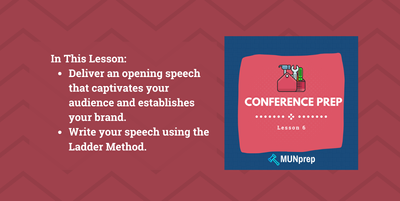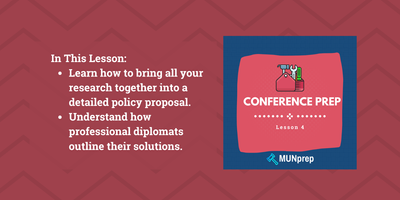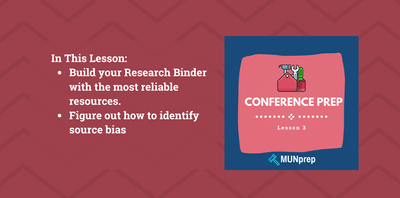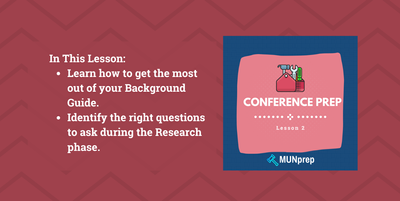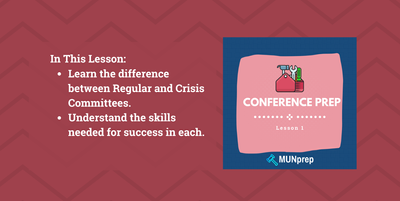MUN Position Papers - Mastering Guided Persuasion
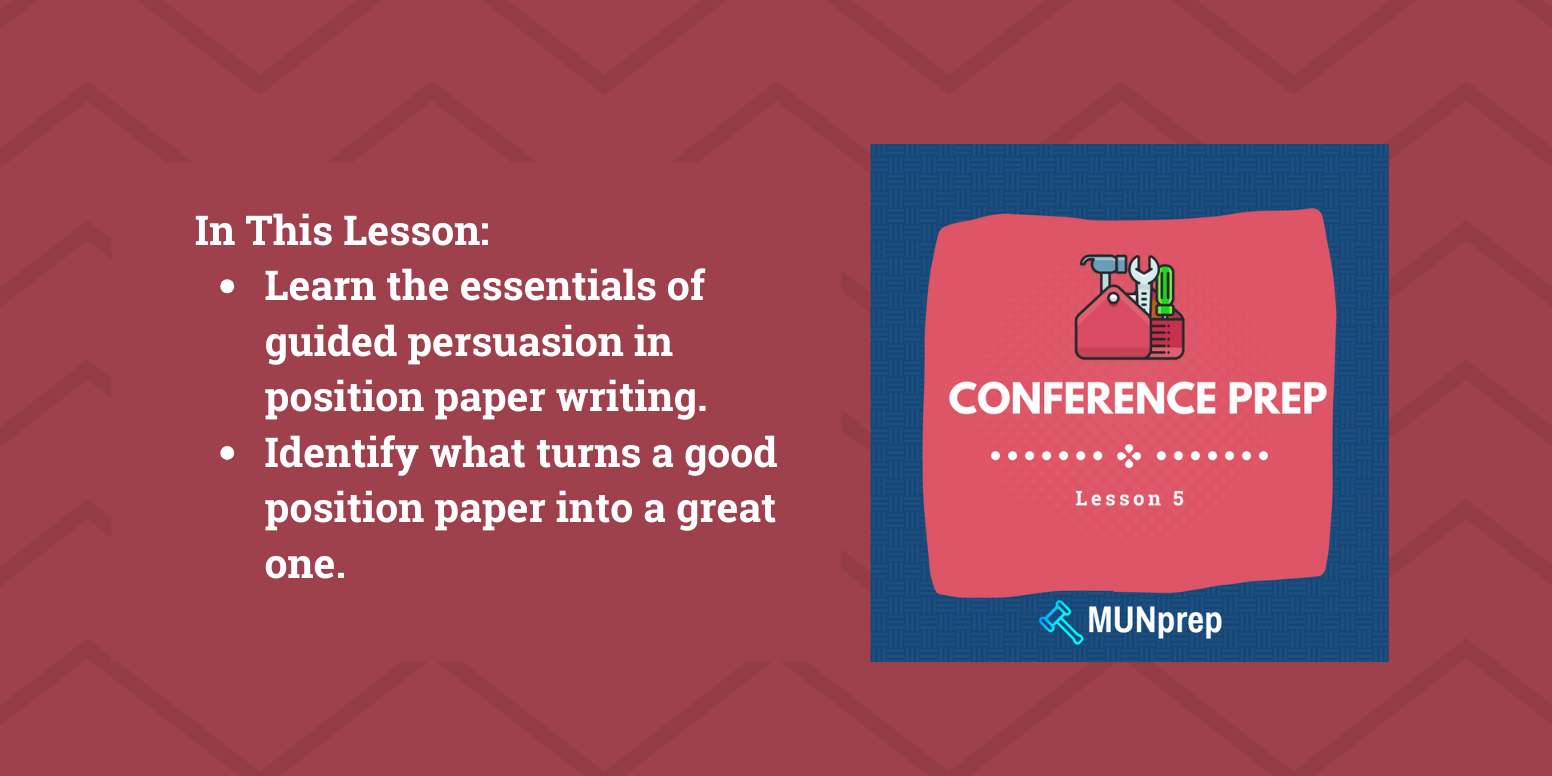
Let's Get Started with Position Papers
Your Position paper is an essay that clearly states and supports an opinion on a specific issue or topic. The goal is to convince a reader that your viewpoint is both credible, and carefully considered.
Your job - Pave a road from your reader’s original stance on the topic all the way to yours. Each fact, piece of research, and statistic you lay down makes the journey a little bit easier, smoothing the path until they naturally arrive at your well-reasoned, predictable conclusion.
let's get started!
In this guide, we're moving to the next stage of the problem solving funnel, where we focus on writing your position paper and help you present your solutions in the best possible light.
- Haven't read your Background Guide yet?
- looking for tips on research?
- Want to turn your ideas into a policy proposal?
A well written position paper will set you up for the rest of your conference, it can be your best friend when it's time to start writing resolutions.
Sample Position Paper
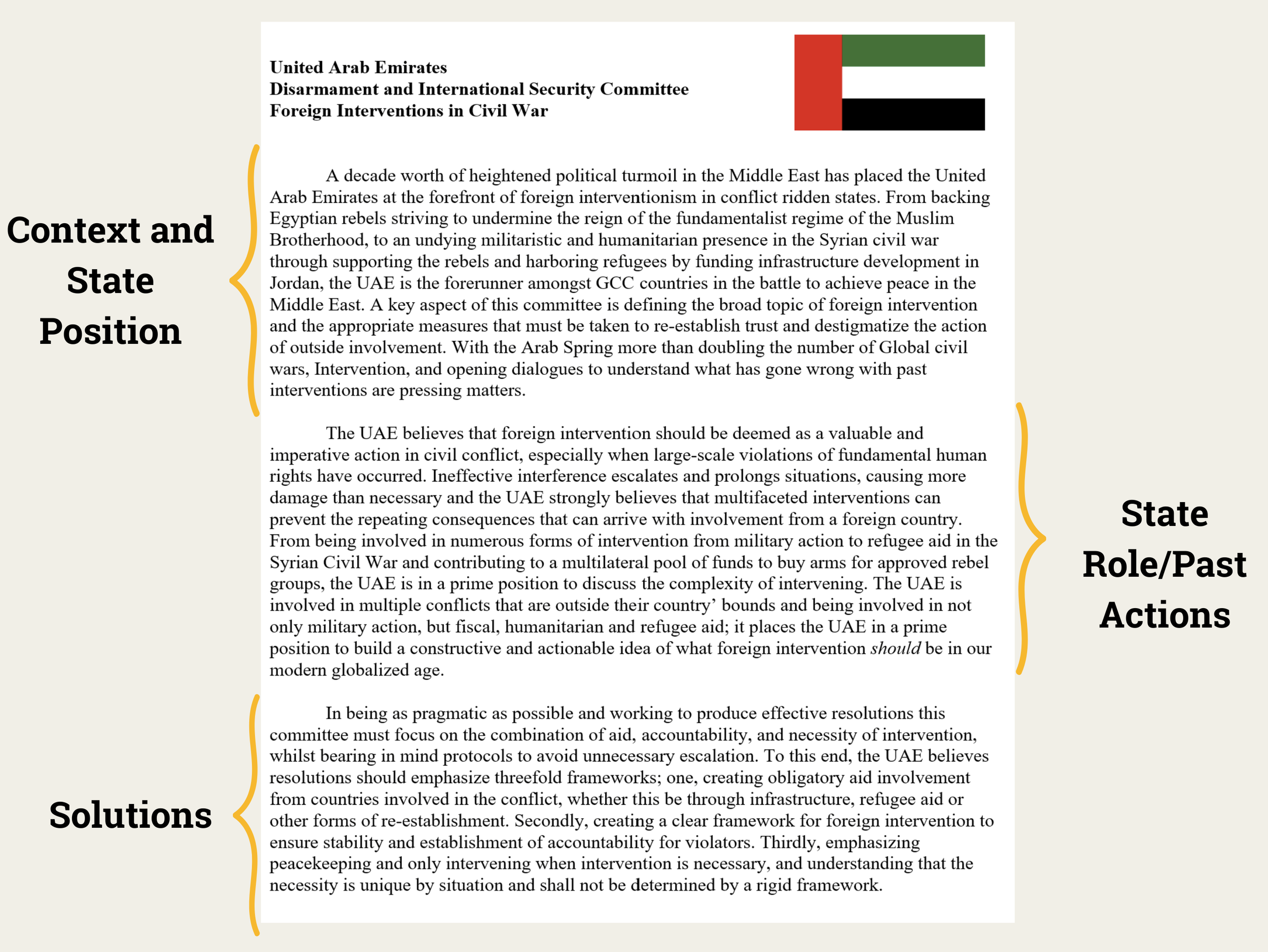
This sample is a perfect example of building logical arguments through something called Guided Persuasion - it's a technique used by Lawyers, Politicians and Diplomats all the time, and it helps them to build arguments that the reader has no choice but to agree with.
But how exactly does it work?
Our Recommended Approach - Guided Persuasion
Guided persuasion is a bit different to standard persuasive writing, but it's the perfect technique for a position paper. With guided persuasion, you carefully build a case, leading the reader step by step through a logical and compelling narrative. Instead of just presenting multiple arguments, this approach ensures each point builds on the last, leading the reader towards your conclusion.
Imagine you're a lawyer in a court-room, your client is on trial for their life and you need to present their case.
You're not just going to stand in front of the jury and say:
"Ladies and gentlemen of the jury, my client is innocent - ignore everything the prosecution has to say, I promise I'm not lying"
While everyone knows that this argument would never work, we somehow see the position paper equivalent of this all the time.
Instead, you need to walk the jury through the facts of the case, point out key pieces of evidence and show how all of this information leads to one inevitable conclusion.
It might look something like this:
"Ladies and gentlemen of the jury, as I have shown you, it is physically impossible that my client could have committed this crime. Based on the expert testimonies, we have demonstrated inconsistencies in the forensic analysis. We have shown you the digital records proving my client’s location at the time of the crime was miles away, and multiple character witnesses have spoken to my client's integrity. Each piece of evidence has built a foundation that stands unshaken by the prosecution."
Position Paper Structure - Guided Persuasion in Action
Fortunately, the principles of guided persuasion from the court-room are exactly the same in your Position Paper.
Just follow these 3 steps:

A Worked Example
Topic: Marine Pollution, Delegation: Iceland
Lay the Foundation:
At this stage, you just want to pique the readers attention, lay down some key facts and your thesis statement.
Basically you just want to set the scene for the rest of your paper.

Build Your Case & Address Counterarguments
Up next, you should explore some other approaches that have already been taken in approaching your problem. Explain what was successful or unsuccessful about those approaches.
If you have the space, provide a few points that give validity to your own policy proposal.

Bring it Home with a Strong Conclusion
For a position paper, you want to both wrap up your argument and lay down your best arguments, now that you have explained why other approaches won't work, why will yours be so effective?

Position Paper Formatting
A well-formatted position paper can go a long way in setting a good impression right from the start. While you should always consult your conference guidelines, make sure to:
- Organize your heading properly
- Avoid using bullet points
- Keep the same font size
- Keep your margins consistent

Different Types of Position Paper
There are a few different formats you can use based on how many words you have to develop your argument.
- Single-Topic, 3-Paragraph Position Paper
- Two-Topic, 5-Paragraph Position Paper
- Balanced Argument Position Paper (8+ Paragraphs)
- Thematic Position Paper (Sectioned by Subtopics)
But while the length of the paper might change, the techniques you use, and the overall style should stay the same.
The Position Paper Checklist
When everything is said and done, it can always help to run through a final checklist to make sure you haven't missed anything.
Here are a few key pointers to keep in mind:
- A brief introduction to the topic and how it affects your country.
- Your country's policies with respect to the issue and your country's justification for these policies.
- Actions taken by your country and other organizations in an attempt to solve the issue.
- A mention of any significant conventions or resolutions, and your delegation's position on them.
- Facts, quotes and statistics to back up your country's position.
- Your policy proposal outlining how your delegation aims to this issue.
Signs of a Great Position Paper
Thorough use of facts and figures - This is especially impressive when you've used information that was not in the background guide.
Some things to avoid
Final Reminders
Always verify your paper requirements - before you even start writing, it’s important to verify your conference requirements. Position Papers can vary significantly between conferences and you want to make sure that you’re adhering to the appropriate specifications. Sometimes, a conference will have very specific instructions for what to include. In other cases, the provisions might be more general.
Include your Sources - High-quality, reputable sources strengthen your claims by backing them up with verified data and expert opinions. Including sources shows that your arguments are not just opinions but are supported by established research and factual evidence.
Read your Background Guide and conduct some research before writing - In the conference prep process, the position paper is at the end of our problem-solving funnel - its all about converting your ideas into an actionable policy proposal and presenting them in the best possible light.

Up Next
Hopefully, you now understand some of the essentials of Position Paper writing and are ready to take on your next conference!
Up next, we're going to look into Opening Speeches.



